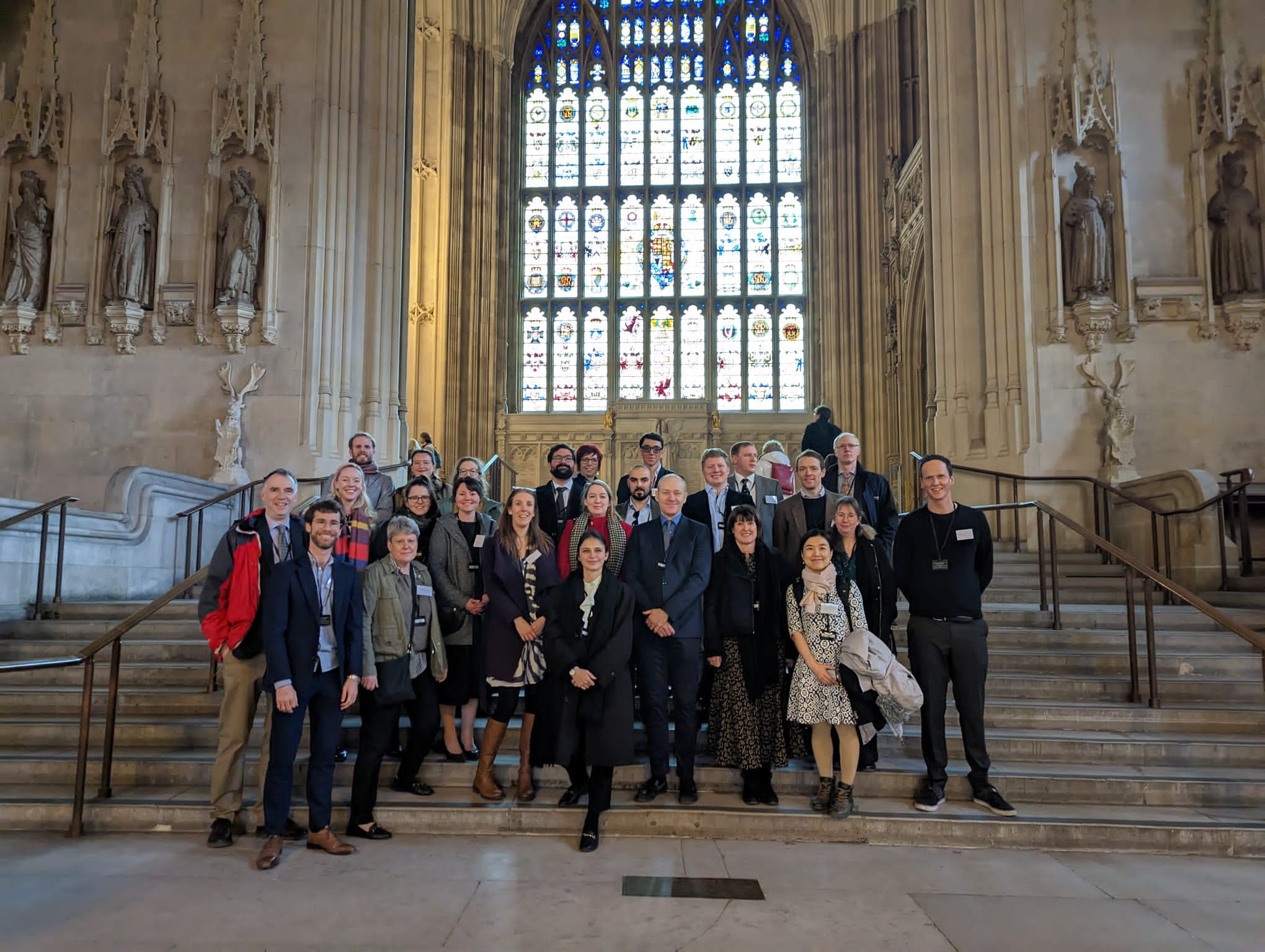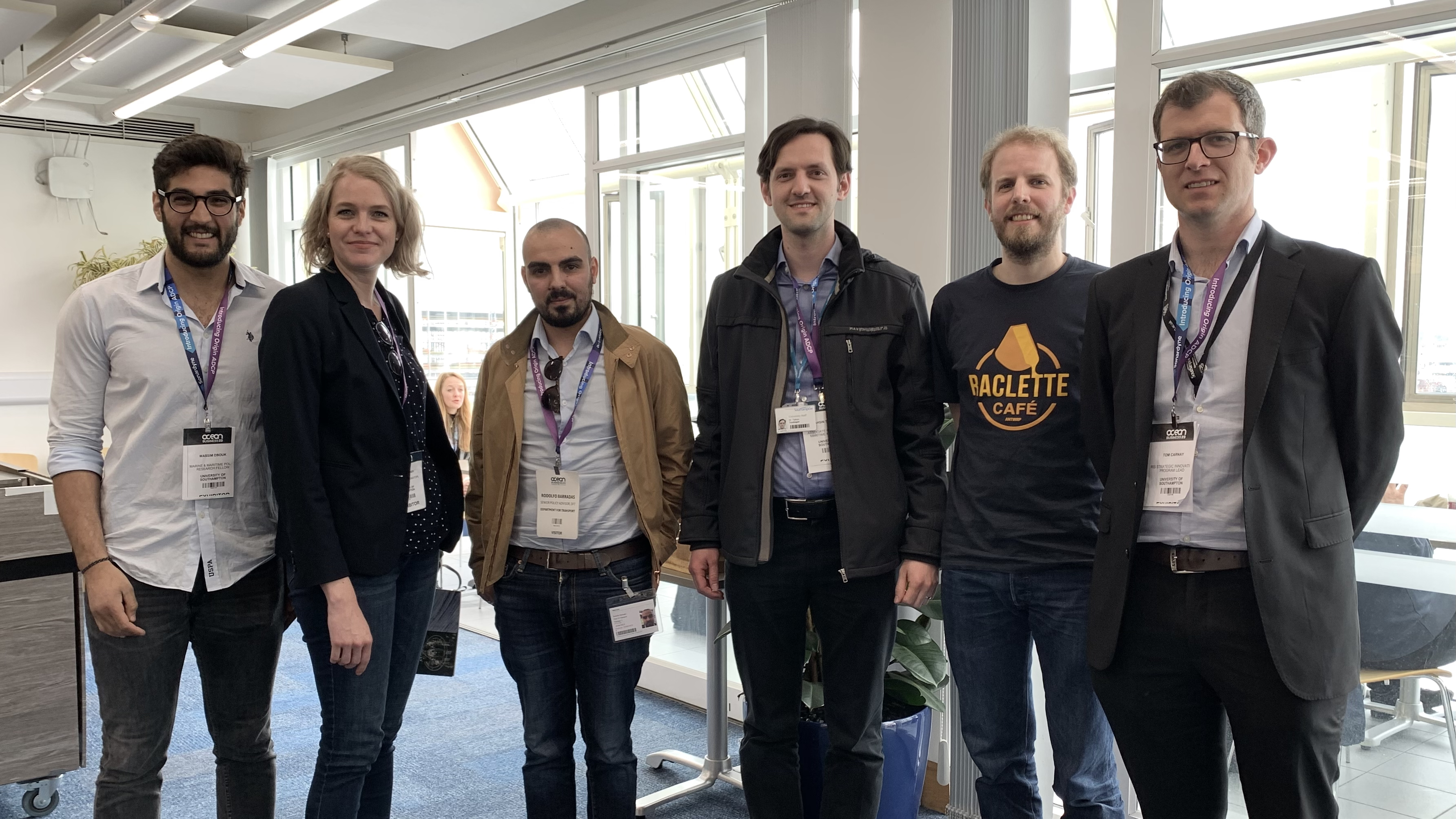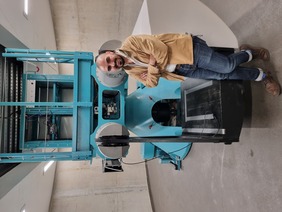Bridging the Gap: Royal Society Pairing Scheme Fosters Collaboration Between Researchers and Civil Servants

Every year the Royal Society Pairing Scheme brings together 30 scientists and 30 MPs/Lords or Civil Servants to foster interactions between academia and policy makers. This includes a ‘Week in Westminster’ packed with workshops, networking opportunities, shadowing Whitehall, and time in Parliament exploring science for policy and policy for science.
Among the research scientists invited to participate in this year’s events was Dr Benjamin Cerfontaine, Lecturer in Geotechnical Engineering at the University of Southampton and member of the Southampton Marine and Maritime Institute (SMMI). Benjamin works on developing innovative foundations or ground probing methods for offshore applications. His PhD (University of Liège, Belgium) focused on hydro-mechanically coupled finite element modelling of suction caissons for offshore wind turbine foundations. Prior to joining the University of Southampton, he worked on developing screw piles as foundations for offshore renewable energy devices, particularly as anchors for floating wind turbines, through an EU-funded MSCA fellowship at the University of Dundee.
Benjamin was paired with Rodolfo Barradas, Senior Policy Advisor at the Department for Transport (DfT). Rodolfo has a communications and policy background. He started his career working in the charity sector before moving into the Civil Service and working across several central government departments on domestic and international policy areas. Outside of work, he is Vice Chair of East Street Arts, an artist-led charity in Leeds.

The group was hosted at Westminster from 27 to 29 March 2023, and Rodolfo visited the University of Southampton on 18 and 19 April 2023. As part of his visit, Rodolfo met with members of the SMMI at Ocean Business 2023 to introduce the work he does and find out more about various aspects that the SMMI community are involved in.
Benjamin and Rodolfo share their reflections below on their experience taking part in the pairing scheme.
Want to find out more about the scheme and how to apply? Updates on joining the scheme in 2024 will be posted on the Pairing Scheme website in October 2023.

Benjamin: I participated in a series of activities organised by the Royal Society intended to introduce the different aspects of the relationship between science and policy. I now have a better overview of the multiple branches of the UK government and parliament, how they work and how they gather scientific evidence. It turns out that the timing and formatting of information are key to contributing to debate. The timescale of policy making is much faster than the one of academic research, and we, scientists, must adapt to share our evidence. The activities ended with an enjoyable mock select committee, where we could grill MPs about their views on the future UK scientific ecosystem. All the activities are also a formidable opportunity to meet a diverse group of other scientists and civil servants and build a cohort. We are still chatting on WhatsApp from time to time.
I also spent two half-days shadowing Rodolfo, who is a senior policy adviser on maritime environment in the Department for Transport (DfT), in London. He accomplished the arduous task of demystifying the complex government machinery. During the shadowing event, I participated to team meeting or working meetings on technical topics and started to understand the decision process and different responsibilities of the people involved.
Beyond the razzle-dazzle of politics, many policy advisors, analysts, and lawyers must deliver ideas into evidence-based policies. The shadowing part of the scheme helped me to better know this audience, as civil servants can have broad portfolios and diverse backgrounds. One of their jobs is to condense and synthesise information from lengthy research papers to no more than two pages, further summarised on a post-it for the minister in charge to read. Formatting our evidence to fit within this process is the best way for it to be picked up.
Fun fact, I could even practice an elevator pitch with Professor Sarah Sharples, the Chief Scientific Advisor at the Department for Transport, in an actual elevator. I found the shadowing part of the scheme particularly important because personal relationships and networks are always a fast track to share information. This is not different from academia. Throughout my career, I have always found that the time invested in networking activities always paid off in the end. Being associated with a specific topic offers many opportunities to contribute to research papers, deliver keynotes… or contribute to policy making.
Finally, I welcomed Rodolfo in Southampton for a two-day reciprocal visit. We visited our different labs, met with experts relevant to Rodolfo’s portfolio and attended short talks from colleagues on technical topics, such as our research on foundations for offshore wind turbines or rail electrification. This ended up being an excellent pretext to meet and talk with more people in the University, discovering new facilities and fostering my own internal network. I even ended up discussing potential student projects on the way.

Rodolfo: The Royal Society Pairing Scheme is a brilliant opportunity to go behind the scenes and take the time to understand each other’s ways of working. In welcoming Benjamin to DfT’s offices, I strove to showcase the range of issues that case cross my desk and introduce him to as many colleagues as possible, giving him a real glimpse of Whitehall. In return, I found it really helpful to have the opportunity to build a network of researchers that I can tap into in future and get a better sense of what challenges researchers face in engaging with civil servants.
My scheme highlight was my visit to Southampton. I got to meet the team behind Southampton Marine and Maritime Institute, visit the National Oceanography Centre and hear about the latest research on maritime air quality. Over at Boldrewood Campus, I observed a live shipping test in the towing tank and toured the impressive National Infrastructure Laboratories which really brought to life much that often I only read about. Plus, I got to meet lots of scientists who helpfully explained their research, on everything from renewable energy to railway infrastructure - I've really come away with a renewed understanding (and appreciation!) of geotechnical engineering.